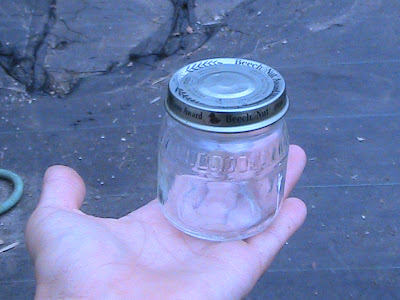As the season moves on, it is amazing seeing all the cycles of each plant. A few weeks ago, the
raspberries were at their peak, providing thousands of flavorful, explosive berries each day, seemingly ripening within mere hours. They were the big hit at the market, vanishing faster than they were able to be picked. Now the raspberries, though still enjoyable, have seemingly become the "washed up actress" at the farm: still available, but less flavorful, not as badly wanted (at least by the volunteer/work crew at the farm- we have had our fill of berries with decadent grazing during harvests), and quickly dwindling in abundance.
Tomatoes have graced us with their presence, and suddenly the spotlight has shifted from sweet raspberries to these savory gems. Yesterday, I ate the first cherry tomato of the season. I had no idea what cherry tomatoes actually tasted like until this moment.

More on bind weed... Rich told me that there has been a
bind weed problem at the farm the entire time he has been farming there- almost a decade! The previous caretaker of the farm thought that the weed was actually a wild morning glory. Though these two plants are related, bind weed is extremely invasive. Sean, the apprentice at the farm, pointed out the difference between the two to me- The first picture is that of a
morning glory plant, and below is a bind weed.


Notice that the bind weed has a much sharper leaf shape. Both bind weed and morning glory leaves and flowers are edible, but should be eaten in small amounts.
I ate a bind weed flower on the farm the other day (they are white and look like morning glory flowers) and Rich told me that he would be hesitant to eat such a plant. You are what you eat... perhaps I will only eat this weed out of necessity in the future.
The
sunflowers are blooming everywhere around the farm, and it is absolutely wonderful with their added presence.

Rich gave us all
Stinging Nettles this past Friday and told us that we had some homework to do: Find out the reason why this plant is good to have around the farm, and cook something with it. Rich told us that usually, nettles are considered as weeds- they are quite unpleasant to come in contact with, living up to their name.
So I called up my friend Rachel, an ethnobotany lover, and asked her why they would be beneficial. It is amazing how healthy this plant is for you- containing up to 25% protein, nettles are the most protein rich of all leafy greens. Consuming it is also beneficial to your kidneys and acts as an anti-diuretic. This plant has a great amount of iron in it, making it a good treatment for anemia. It has also been used externally as a treatment for arthritis, through repetitive whipping of the body with a long section of the plant.
While preparing the nettles, I made sure to avoid touching the plant at all, because it seems that there are stingers, or "trichomes", located not only on the stems but even on the leaves. At the beginning, I carefully plucked off each leaf individually, but then eventually I realized that by holding the top of the stem, grasping the stem in a fist (with gloves or wash cloths), and sliding my hand down, the leaves were able to strip off of the plant quite easily.
In Europe, nettles are not only more present, but more frequently eaten. I called up my mom to ask for a Swedish recipe, and I also added my own spin.
Stinging Nettle Soup:1. Soak the nettles in room temperature salt water (I added about 5 tablespoons to a large bowl of it) (I think this is to deactivate the sting).
2. In the bottom of a large pot, saute onion, garlic, chives, and chopped potatoes with some olive oil, salt, and pepper.
3. When the potatoes are almost fully done, add a bit of vegetable broth and then a bit of flour, and repeat, to make a rue of some sort.
4. Add a tablespoon (or two) of ginger, a splash of soy sauce, and a tablespoon of thyme (perhaps some rosemary too! I didn't do this, but thought that it would have added a nice flavor)
6. Stir in chopped tofu. Let cook for a little, then chop the nettles into strips and add to rue.
7. Gradually add more vegetable broth (as much as you like) and let simmer for 5-7 minutes.
I enjoyed this recipe, but Sean told me that he ate his nettle soup in a pureed form! The hearty texture of the nettles I imagine can be a problem for some people, but I enjoyed eating this earthy plant. Tomorrow the rest of the farm crew will share recipes and information on nettles- it should be interesting learning about different ways to cook this plant.


















































